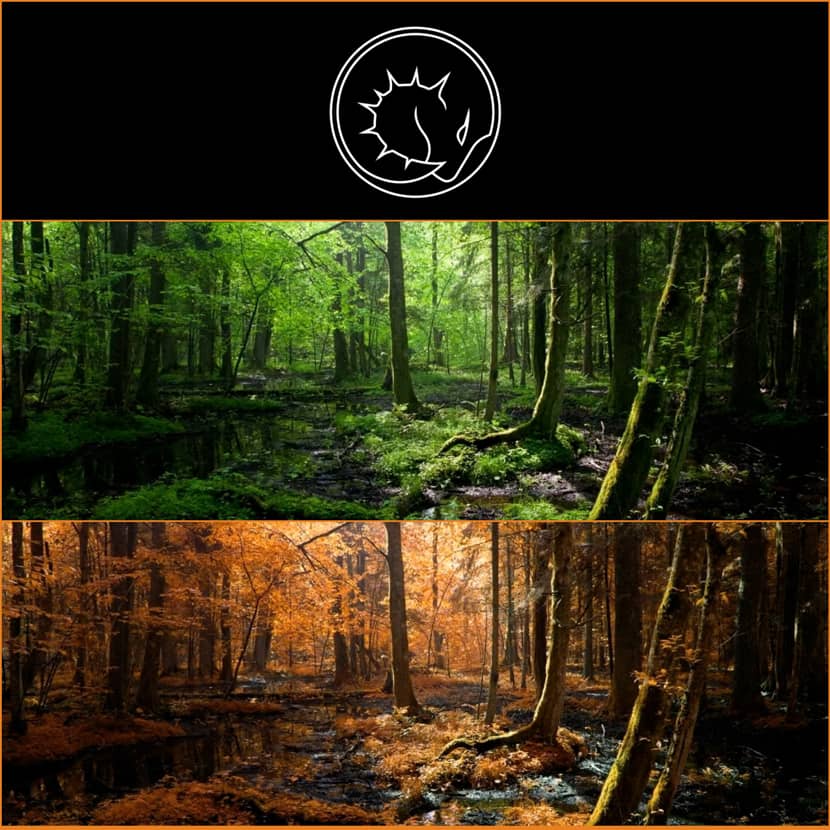
It typically takes careful color grading, texture replacement, or manual adjustments across several layers in Photoshop to transform green trees into warm, golden autumn colors. However, what if we told you that there is a straightforward, two-click solution that completes everything instantly? Watch the RenderRam's fast tip and learn something useful today!
In this tutorial, Vjeko reveals a surprisingly effective trick using LAB color mode in Photoshop that transforms any green foliage into realistic autumn hues, perfect for last-minute deadlines or seasonal variations in your 3D scenes.
Discovering the LAB Color Magic.
Experiments on his Patreon while investigating the theory behind why "a photo feels like a photo, and a render feels like a render" gave rise to the technique, as Vjeko explains. He discovered an intriguing effect in Photoshop's LAB color mode during that investigation: a color space that divides brightness from color data into two separate channels, A and B.
- L (Lightness) – controls the black-and-white information of the image
- A Channel – defines the color range between green and red
- B Channel – defines the color range between yellow and blue
The full-color image is created by combining these three. Inverting the A channel with Ctrl + I suddenly turns greens into deep reds and oranges, which are the exact tones that characterize autumn foliage. This is the true secret.
From Green to Gold: The Simple Workflow.
Vjeko's method is remarkably quick and stunningly straightforward. Here's how it operates in detail:
- Open your image in Photoshop and navigate to:
Image → Mode → LAB Color - Open the Channels panel and select the A channel.
- Invert the A channel by pressing Ctrl + I.
- Return the image to RGB mode to continue editing or exporting as usual.
That's it—fall arrives immediately! Realistic yellows, oranges, and reds emerge organically, as though they were hand-painted, and the metamorphosis is remarkably true.
Applying It to 3D Leaf Textures.
Vjeko, of course, went one step further. He implemented the technique directly to 3ds Max leaf textures rather than only to photos. He could quickly transform any green-leafed model into a fully autumnal one without repainting or painstakingly changing hues by simply flipping the A channel on the leaf maps.
He showed how to rapidly reload the modified leaf textures in 3ds Max using Project Manager. To make it easier to replace the original texture in the scene, each one was given a new name that included an underscore, such as "_1." The results were stunning: within seconds, the forest transformed into a rich palette of oranges, yellows, and browns — “stupidly believable,” as Vjeko described it.
When to Adjust and When Not To.
Vjeko notes that although the approach is generally very effective, there is a slight catch: inverting textures that are already somewhat brown or desaturated might produce strange effects. In similar situations, he suggests applying the inversion selectively within a mask or using only specific color ranges.
However, for the majority of green foliage textures, this trick works perfectly out of the box — no extra color correction or post-adjustment needed.
One-Click Automation.
You may record this procedure as a Photoshop Action, making it a genuine one-click operation, which will speed up the processing even further. For artists working on autumn-themed products with short turnaround times, this makes it quite helpful.
“I wasn’t able to find any tutorial showing this exact workflow,” Vjeko says, “so hopefully this helps someone out there, especially during those stressful last-minute deadlines.”
Why It Matters.
The effectiveness of this discovery, rather than its simplicity, is what makes it so useful. Fast and dependable techniques like this can save hours of manual labor in the fast-paced world of ArchViz. The ability to quickly transition from summer to fall brings you new creative options, whether you're rendering an exterior for a real estate project or modifying an environment scene for seasonal storytelling.
Conclusion.
Vjeko’s “Easy Autumn Plant Trick” is a perfect example of the RenderRam philosophy — practical, clever, and accessible solutions that help 3D artists achieve stunning results with minimal effort. By combining the technical understanding of color spaces with a creative mindset, even small discoveries like this one can lead to major improvements in workflow and realism.
Watch the full video, with all details included about how to easily transform a green scene scenario to an autumn one:
RenderRam is a platform created by Vjeko Kiraly, dedicated to exploring the intersections of technology, 3D art, and productivity. Through in-depth tutorials, experiments, and honest reviews, Vjeko shares practical insights for digital artists and developers worldwide. His engaging style and technical expertise have made RenderRam a trusted voice in the CG community.

